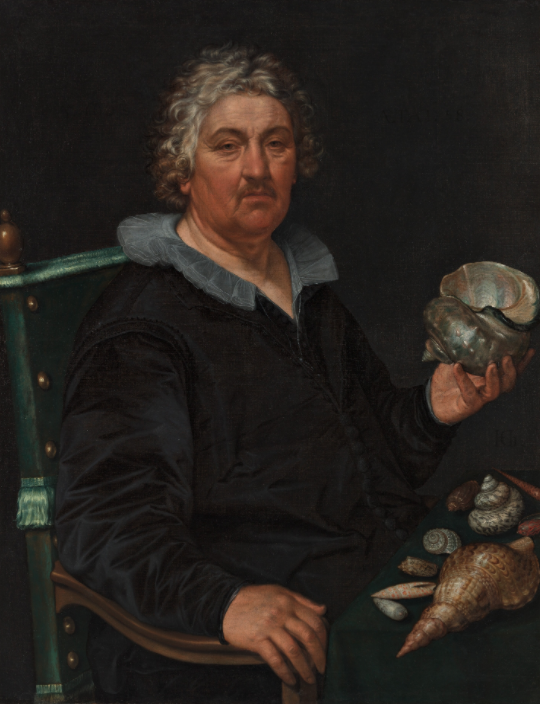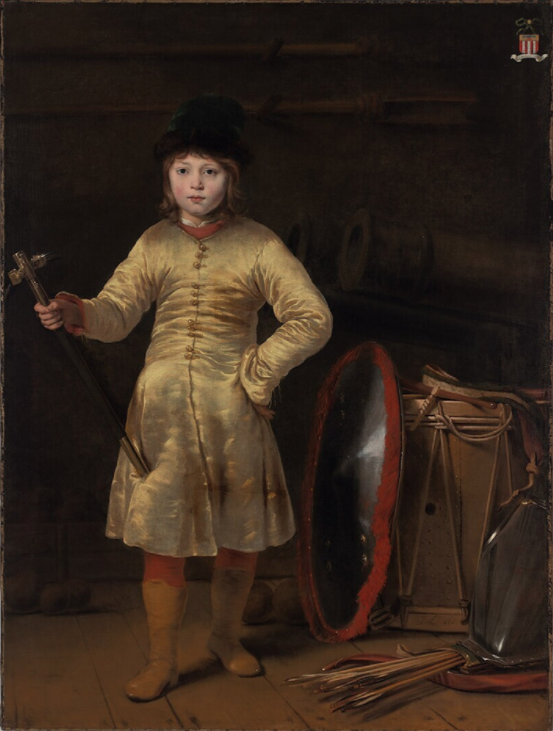Difference between revisions of "User:B artK"
| Line 1: | Line 1: | ||
Digital Craft started with an afternoon in Boijmans Van Beuningen ment to choose one of the artefacts out of the collection of the museum to make a “copy” and a transformation of it. I chose plural works aged in the dutch golden age (1600-1699) which have in common that they are made to show the expensive clothes and properties of the people shown on it and that is mainly about status. | Digital Craft started with an afternoon in Boijmans Van Beuningen ment to choose one of the artefacts out of the collection of the museum to make a “copy” and a transformation of it. I chose plural works aged in the dutch golden age (1600-1699) which have in common that they are made to show the expensive clothes and properties of the people shown on it and that is mainly about status. | ||
| + | |||
[[File:Jacob en zijn echtgenote met een satijnen jurk.jpg]] | [[File:Jacob en zijn echtgenote met een satijnen jurk.jpg]] | ||
[[File:De haarlemse schelpenverzamelaar Jan Govaertsen van der Aart.png]] | [[File:De haarlemse schelpenverzamelaar Jan Govaertsen van der Aart.png]] | ||
[[File:Otto van der waayen in Pools kostuum.png]] | [[File:Otto van der waayen in Pools kostuum.png]] | ||
| + | |||
That’s why I see them as a golden age kind of instagram, but I also see a parallel in our contemporary society were we also add value to certain kinds of fashion and clothing. The difference with the golden age is that the status there was added to the clothing because of it’s the expensive textile or it’s origine (the satin in Abraham del Court en zijn echtgenote Maria de Kaersgieter and the Polish costume in Otto van der Waeyen in Pools kostuum for example), but nowadays we lost the value of clothes trough it’s material value or it’s origine. | That’s why I see them as a golden age kind of instagram, but I also see a parallel in our contemporary society were we also add value to certain kinds of fashion and clothing. The difference with the golden age is that the status there was added to the clothing because of it’s the expensive textile or it’s origine (the satin in Abraham del Court en zijn echtgenote Maria de Kaersgieter and the Polish costume in Otto van der Waeyen in Pools kostuum for example), but nowadays we lost the value of clothes trough it’s material value or it’s origine. | ||
| Line 12: | Line 14: | ||
| − | In my transformation I have given myself my own status by copying this idea of wearing a T-shirt with just a brand logo/name and wear a T-shirt with my own brand on it. | + | My copy is a copy of the painting of Hendrick Goltzius called: ‘De Haarlemse schelpenverzamelaar Jan Govaertsen Van Der Aart’ which I turned into a sneaker collector instead of a shell collector. |
| + | |||
| + | In my transformation I have given myself my own status by copying this idea of wearing a T-shirt with just a brand logo/name on the chest part and wear a T-shirt with my own brand on it. | ||
Revision as of 10:48, 6 June 2018
Digital Craft started with an afternoon in Boijmans Van Beuningen ment to choose one of the artefacts out of the collection of the museum to make a “copy” and a transformation of it. I chose plural works aged in the dutch golden age (1600-1699) which have in common that they are made to show the expensive clothes and properties of the people shown on it and that is mainly about status.
That’s why I see them as a golden age kind of instagram, but I also see a parallel in our contemporary society were we also add value to certain kinds of fashion and clothing. The difference with the golden age is that the status there was added to the clothing because of it’s the expensive textile or it’s origine (the satin in Abraham del Court en zijn echtgenote Maria de Kaersgieter and the Polish costume in Otto van der Waeyen in Pools kostuum for example), but nowadays we lost the value of clothes trough it’s material value or it’s origine.
However, we still feel the need to show our status and properties to the rest of the world and it interests me that we do that by buying brands with which we identify ourselves. We call them often “designer brands” and we pay a lot of money for them. That’s why they show a certain status to the rest of the world.
My copy is a copy of the painting of Hendrick Goltzius called: ‘De Haarlemse schelpenverzamelaar Jan Govaertsen Van Der Aart’ which I turned into a sneaker collector instead of a shell collector.
In my transformation I have given myself my own status by copying this idea of wearing a T-shirt with just a brand logo/name on the chest part and wear a T-shirt with my own brand on it.


